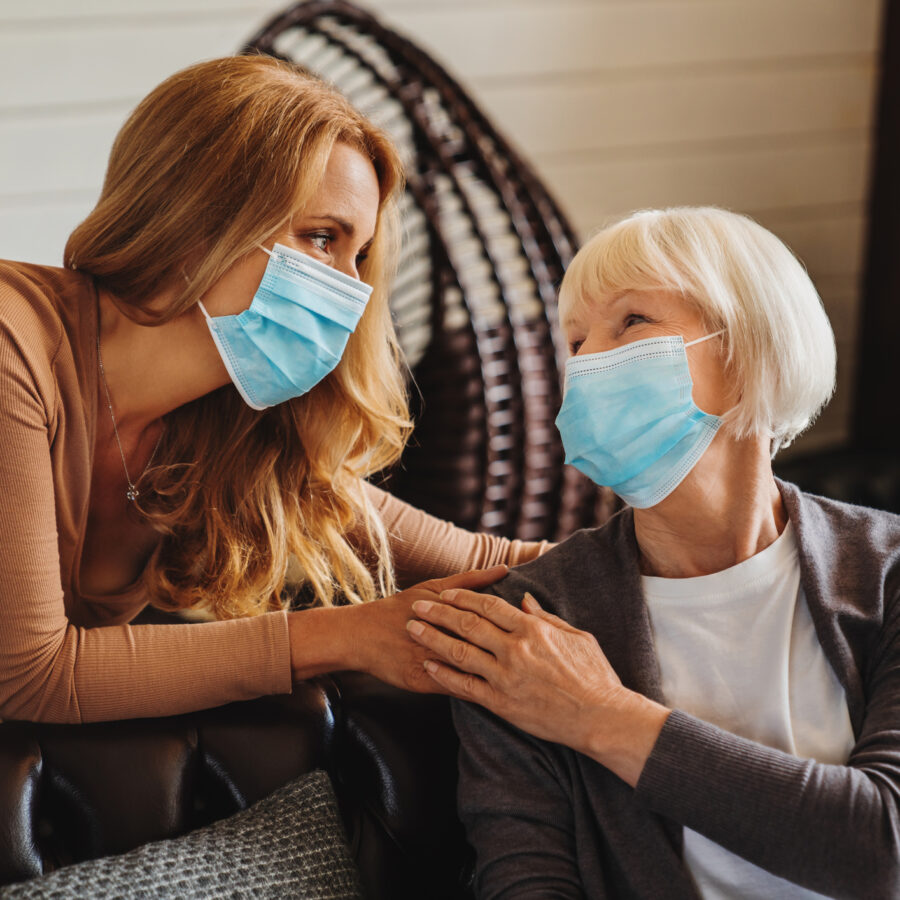As COVID-19 restrictions change and become less restrictive, determining what is safe for seniors should be based on an assessment and the infection rate in the area in which the senior lives.
It means following the science, even though people may gather without masks in public places and with no social distancing. State, city and federal leaders may request that schools, stores, and social activities open and begin. But that doesn’t mean that people age 65 and older, especially those with chronic health conditions, should automatically comply, as they make up the vast majority of the nearly 200,000 COVID-19 deaths in this country.
After months of living in isolation, it will be tempting for seniors to want to join with others. Consideration of a senior’s health issues, however, as well as the emergence of the virus in hot spots, should be evaluated.
The Risks
According to the Centers for Disease Control and Prevention (CDC), there is no way to ensure a zero risk of infection. Furthermore, the CDC says, the risk is increased the more people with whom you interact, the more closely you interact with them, and the longer that the interaction takes place.
Lowering the Risk of Infection
The list of precautions should be familiar by now—so much so that people may no longer want to hear them. But they are still the best line of defense for the pandemic—a deadly virus that has no cure or proven vaccine.
- Avoid close contact
- Wash hands often and thoroughly (at least 20 seconds each time)
- Wear masks covering mouth and nose when others are around
- Clean and disinfect
- Limit contact with commonly touched surfaces
- Monitor your health daily
The CDC has also published a graded risk assessment about participating in an event or gathering:
Lowest risk: Virtual activities, events and gatherings.
More risk: Smaller outdoor and in-person gatherings in which individuals from different households remain spaced at least 6 feet apart, wear masks, do not share objects, and come from the same local area (e.g. community, town, city, or county)
Higher risk: Medium-sized in-person gatherings that are adapted to allow individuals to remain spaced at least 6 feet apart and with attendees coming from outside the local area.
Highest risk: Large in-person gatherings where it is difficult for individuals to remain spaced at least 6 feet apart and attendees travel from outside the local area.
An individual and specific evaluation of the senior needs to be made to determine the amount of risk that is acceptable. This should take into consideration if the senior has a high-risk medical condition such as lung disease, heart problems, or diabetes.
It is good to also be aware of state and local level COVID-19 case numbers to determine the risk level for a senior.
The CDC data tracker identifies total death and infection rates by state, as well as cases over the last seven-day period in each state.
Senior Living Communities
As restrictions ease around the country, some senior living communities are allowing window, patio, walk-up window, and drive-thru visits with residents.
At Bethesda, we continues to adhere to the communication from the CDC, CMS (Centers for Medicare & Medicaid Services) and the state and local Departments of Health when it comes to infection control and prevention of COVID-19. Restrictive visitation policies in all Bethesda skilled nursing and assisted living communities are still in place.
Bethesda offers virtual visits via Skype or Zoom which can be coordinated by the Life Enrichment/Activities Directors at each skilled nursing or assisted living community. For those campuses where skilled nursing or assisted living communities provide an opportunity for outdoor visits, arrangements can be made by contacting the facility.
A full explanation of Bethesda’s visitation policies can be found here.
Track the status of nursing home visits in your state.
Want to find out more?
If you’d like to stay up to date with Bethesda Health Group, sign up here to receive our blog and newsletters!
"*" indicates required fields
Related Articles
Want to find out more?
If you’d like to stay up to date with Bethesda Health Group, sign up here to receive our blog and newsletters!
"*" indicates required fields



